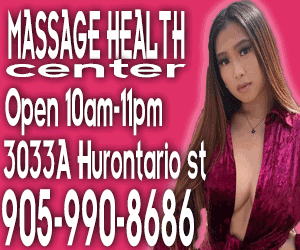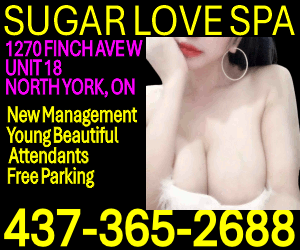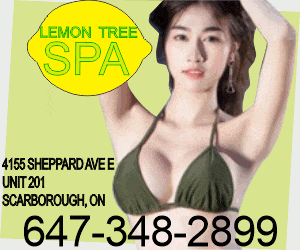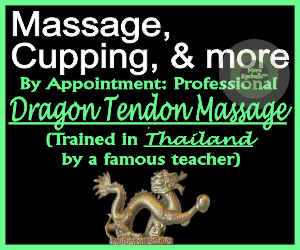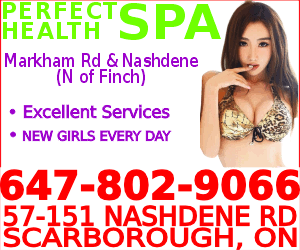M
mnews
Guest
Massages and beauty treatments have long been cherished for their therapeutic and aesthetic benefits, but recent incidents have cast a spotlight on their potential risks. The recent deaths of a Thai singer and a Singaporean tourist following visits to massage parlours in Thailand have sparked concerns throughout the world. From neck manipulation to chemical peels, these practices range from relatively safe to potentially dangerous, depending on the procedure, the practitioner’s qualifications, and the individual’s health condition. Understanding what is considered acceptable, the possible issues that can arise, and the steps to resolve them is essential for anyone seeking such treatments.
The safety of any massage or beauty treatment hinges on adherence to best practices, which encompass trained practitioners, evidence-based techniques, individualised care, and rigorous hygiene standards. Treatments, especially those targeting high-risk areas like the neck, should only be performed by licensed and qualified professionals. “The qualifications of the practitioner are the cornerstone of safety,” emphasises Tanvi Vaidya, Medical Director of Derma MD Clinics in Thane. “Untrained individuals handling sensitive areas, like the neck or face, can cause serious harm.”
Cracking sound after head massage could prove fatal

Evidence-based techniques further enhance safety, as they are grounded in scientific research and medical understanding. Swedish massages, for instance, are widely considered low-risk as they focus on muscle relaxation, unlike forceful neck manipulations, which carry higher risks of injury. Informed consent and tailored approaches are equally critical. Reputable practitioners should always discuss the procedure, its benefits, and any potential risks beforehand. Personalisation is key, as individuals with underlying conditions like osteoporosis or diabetes may require specific adjustments or need to avoid certain techniques entirely.
Hygiene and equipment standards are another non-negotiable aspect of safety. Massage centres and salons must adhere to strict hygiene protocols, ensuring all equipment is clean and the environment sterile. These precautions are essential to minimise the risk of infections and other complications, setting a clear benchmark for what is considered acceptable in massage and beauty treatments.
Despite the perception of massages and beauty treatments as harmless indulgences, complications can occur when safety guidelines are not followed.
Rub-a-dub-dub

The neck is one of the most delicate areas of the body, housing vertebral arteries, the spinal cord, and critical nerves. Improper manipulation in this region can have dire consequences. Twisting the neck excessively risks vertebral artery dissection, which can lead to a stroke. Overstretching or forceful adjustments may result in spinal cord damage, potentially causing paralysis or chronic pain. Additionally, excessive manipulation can injure internal structures, such as joints and ligaments, resulting in long-term complications. “Massaging or stretching areas below the neck is relatively safer,” notes Nitesh Kumar Rathi, senior spine surgeon and head of spine surgery at Saveetha Medical College, Chennai . “However, the neck is a critical area. Even slight errors in rotation or pressure in any direction can lead to severe injuries.”
Beyond manipulations, beauty treatments such as facials or chemical peels also come with risks, particularly when hygiene protocols or product safety testing are overlooked. Using unsterilised tools or low-quality products can lead to burns, skin infections and allergic reactions, posing significant health concerns.
Lifestyle factors further contribute to neck and upper back pain, often stemming from prolonged device use and poor posture. “Many patients mistakenly attribute such pain to structural issues, seeking aggressive treatments without addressing the root cause,” Dr. Rathi explains. These issues often require postural corrections and targeted lifestyle changes rather than invasive or forceful interventions.
New norms leave spa owners, workers in Chennai in a tizzy
When dealing with neck pain or related discomfort, the first step should always be to consult a qualified medical professional, such as an orthopaedic surgeon, neurologist, or neurosurgeon, who can provide an accurate diagnosis and a tailored treatment plan. “Don’t jump straight into massages or manipulations,” warns Dr. Rathi. “A proper diagnosis is critical.” Lifestyle factors often contribute to such pain, and addressing these can make a significant difference. Ergonomic adjustments, such as elevating workstations to eye level and avoiding prolonged forward bending, are essential. Stretching and strengthening exercises under professional guidance can also help alleviate discomfort and prevent future issues.
Equally important is ensuring that treatments are performed by certified practitioners in reputable clinics or spas. Unregulated practitioners may lack the expertise to handle complex cases or recognise contraindications, putting patients at risk. A stepwise approach to treatment is crucial, especially for those with chronic pain or health concerns. Start with a thorough evaluation by a qualified doctor, followed by interventions like physiotherapy or targeted exercises, with massages serving as supplemental care rather than the primary solution.
Dr. Rathi advises staying alert to warning signs, while undergoing such beauty treatments or massages, including shooting pain, numbness, tingling in the arms or legs, or worsening of existing pain and/or new pain in the neck or shoulders. Seeking immediate medical attention if any of these symptoms arise is crucial . Also, industry-wide regulation is necessary to ensure safety in beauty and wellness practices. Experts including Dr. Tanvi Vaidya and Dr. Rathi emphasise the need for mandatory certifications, transparent protocols, and hygiene audits to protect consumers and uphold industry standards.
What you need to know before your first post-lockdown salon visit

When approached responsibly, massages and beauty treatments can provide immense benefits, from relaxation to pain relief. However, safety must always come first.
“Don’t experiment with unverified treatments or practitioners,” advises Dr. Vaidya. “Stick to evidence-based practices performed by trained professionals.” Similarly, Dr. Rathi stresses that “treatments should never be painful or forceful. The focus should always be on achieving mobility and relief without compromising safety.”
By understanding what is acceptable, recognising potential risks, and prioritising medical guidance, individuals can enjoy the benefits of these treatments without jeopardising their well-being. After all, sustainable self-care is not just about looking good or feeling relaxed - it’s about making informed, safe choices that protect and enhance overall health.
(Dr. Monisha Madhumita is a consultant dermatologist at Saveetha Medical College, Chennai and member of the International Alliance for Global Health Dermatology, London, UK. mail.monisha.m@gmail.com )
Published - December 22, 2024 09:30 am IST
Read Comments
Remove SEE ALL
PRINT
spas and resorts / healthcare policy / health and hygiene
The safety of any massage or beauty treatment hinges on adherence to best practices, which encompass trained practitioners, evidence-based techniques, individualised care, and rigorous hygiene standards. Treatments, especially those targeting high-risk areas like the neck, should only be performed by licensed and qualified professionals. “The qualifications of the practitioner are the cornerstone of safety,” emphasises Tanvi Vaidya, Medical Director of Derma MD Clinics in Thane. “Untrained individuals handling sensitive areas, like the neck or face, can cause serious harm.”
Cracking sound after head massage could prove fatal
Evidence-based techniques further enhance safety, as they are grounded in scientific research and medical understanding. Swedish massages, for instance, are widely considered low-risk as they focus on muscle relaxation, unlike forceful neck manipulations, which carry higher risks of injury. Informed consent and tailored approaches are equally critical. Reputable practitioners should always discuss the procedure, its benefits, and any potential risks beforehand. Personalisation is key, as individuals with underlying conditions like osteoporosis or diabetes may require specific adjustments or need to avoid certain techniques entirely.
Hygiene and equipment standards are another non-negotiable aspect of safety. Massage centres and salons must adhere to strict hygiene protocols, ensuring all equipment is clean and the environment sterile. These precautions are essential to minimise the risk of infections and other complications, setting a clear benchmark for what is considered acceptable in massage and beauty treatments.
Despite the perception of massages and beauty treatments as harmless indulgences, complications can occur when safety guidelines are not followed.
Rub-a-dub-dub
Recognising warning signs
The neck is one of the most delicate areas of the body, housing vertebral arteries, the spinal cord, and critical nerves. Improper manipulation in this region can have dire consequences. Twisting the neck excessively risks vertebral artery dissection, which can lead to a stroke. Overstretching or forceful adjustments may result in spinal cord damage, potentially causing paralysis or chronic pain. Additionally, excessive manipulation can injure internal structures, such as joints and ligaments, resulting in long-term complications. “Massaging or stretching areas below the neck is relatively safer,” notes Nitesh Kumar Rathi, senior spine surgeon and head of spine surgery at Saveetha Medical College, Chennai . “However, the neck is a critical area. Even slight errors in rotation or pressure in any direction can lead to severe injuries.”
Beyond manipulations, beauty treatments such as facials or chemical peels also come with risks, particularly when hygiene protocols or product safety testing are overlooked. Using unsterilised tools or low-quality products can lead to burns, skin infections and allergic reactions, posing significant health concerns.
Lifestyle factors further contribute to neck and upper back pain, often stemming from prolonged device use and poor posture. “Many patients mistakenly attribute such pain to structural issues, seeking aggressive treatments without addressing the root cause,” Dr. Rathi explains. These issues often require postural corrections and targeted lifestyle changes rather than invasive or forceful interventions.
New norms leave spa owners, workers in Chennai in a tizzy
How can these issues be resolved?
When dealing with neck pain or related discomfort, the first step should always be to consult a qualified medical professional, such as an orthopaedic surgeon, neurologist, or neurosurgeon, who can provide an accurate diagnosis and a tailored treatment plan. “Don’t jump straight into massages or manipulations,” warns Dr. Rathi. “A proper diagnosis is critical.” Lifestyle factors often contribute to such pain, and addressing these can make a significant difference. Ergonomic adjustments, such as elevating workstations to eye level and avoiding prolonged forward bending, are essential. Stretching and strengthening exercises under professional guidance can also help alleviate discomfort and prevent future issues.
Equally important is ensuring that treatments are performed by certified practitioners in reputable clinics or spas. Unregulated practitioners may lack the expertise to handle complex cases or recognise contraindications, putting patients at risk. A stepwise approach to treatment is crucial, especially for those with chronic pain or health concerns. Start with a thorough evaluation by a qualified doctor, followed by interventions like physiotherapy or targeted exercises, with massages serving as supplemental care rather than the primary solution.
Dr. Rathi advises staying alert to warning signs, while undergoing such beauty treatments or massages, including shooting pain, numbness, tingling in the arms or legs, or worsening of existing pain and/or new pain in the neck or shoulders. Seeking immediate medical attention if any of these symptoms arise is crucial . Also, industry-wide regulation is necessary to ensure safety in beauty and wellness practices. Experts including Dr. Tanvi Vaidya and Dr. Rathi emphasise the need for mandatory certifications, transparent protocols, and hygiene audits to protect consumers and uphold industry standards.
What you need to know before your first post-lockdown salon visit
Striking a balance
When approached responsibly, massages and beauty treatments can provide immense benefits, from relaxation to pain relief. However, safety must always come first.
“Don’t experiment with unverified treatments or practitioners,” advises Dr. Vaidya. “Stick to evidence-based practices performed by trained professionals.” Similarly, Dr. Rathi stresses that “treatments should never be painful or forceful. The focus should always be on achieving mobility and relief without compromising safety.”
By understanding what is acceptable, recognising potential risks, and prioritising medical guidance, individuals can enjoy the benefits of these treatments without jeopardising their well-being. After all, sustainable self-care is not just about looking good or feeling relaxed - it’s about making informed, safe choices that protect and enhance overall health.
(Dr. Monisha Madhumita is a consultant dermatologist at Saveetha Medical College, Chennai and member of the International Alliance for Global Health Dermatology, London, UK. mail.monisha.m@gmail.com )
Published - December 22, 2024 09:30 am IST
Read Comments
Remove SEE ALL
Related Topics
spas and resorts / healthcare policy / health and hygiene































